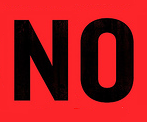By Sean Evans (The Cascade) – Email
Print Edition: March 14, 2012
This last week, as we are all aware, a video produced by Invisible Children outlining the war crimes of Joseph Kony went viral. Here are the reasons I chose not to share that video.
First of all, it oversimplifies a complex issue. Kony has been operating in Uganda and the surrounding area for over 20 years. This is not a simple issue. In the video, the narrator asks his son “who the bad guy” in Uganda is. His son points to a picture of Kony, and the video moves on. What is not made clear is that Kony is not the only “bad guy” in Uganda. The video makes it seem as though if we get rid of Kony, all will be well in Uganda. This is not the case. Logic alone tells us that there have to be people supporting this man. Even if Kony were to be killed or captured and the Lord’s Resistance Army (LRA) were to subsequently fade away, Foreign Affairs points out that the LRA is “a relatively small player in all of this — as much a symptom as a cause of the endemic violence.”
As a history student, I’ve been taught over and over again that there is never a case of “good guys” versus “bad guys.” This sort of language oversimplifies the issues, and creates a belief that if we could just go over there and get those bad guys, all would be solved. What about the child soldiers that he kidnapped 15 years ago, now in their 20s? Are they still victims, or are they now perpetrators? This is an issue that the video does not once grapple with.
Secondly, the film as it stands is incomplete; one very important voice was all but missing from the video — the Ugandan voice.
“It is hard to respect any documentary on northern Uganda where a five-year-old white boy features more prominently than any northern Ugandan victim or survivor,” writes Canadian human rights scholar Mark Kersten at www.justiceinconflict.org. “Incredibly, with the exception of the adolescent northern Ugandan victim, Jacob, the voices of northern Ugandans go almost completely unheard.”
Let’s be honest, the video really lacked the view point of anyone who is currently on the ground and dealing with the situation. Kersten states this as intentional. Why? Because their voices do not fit into the narrative given by Invisible Children. The video does not report that many northern Ugandans support an amnesty process, in which high-ranking members of the LRA could return to Uganda in exchange for amnesty. The reality, as Kersten points out, is that “it is their own children who constitute the LRA.” This story, however, is completely absent from the Kony 2012 video.
Perhaps the most interesting complaint against Kony 2012 is that Ugandans themselves don’t like it – many Ugandans have been vocal in their opposition to the video and what it stands for. For many, it is just another example of western, white paternalism. Somehow, we in the west believe that it is our god-given responsibility to solve the problems of “third-world” countries. Many Ugandans, who are on the ground facing the reality of the situation, have complained that the video does not advocate that Ugandans deal with the problem themselves.
For example, the Kony 2012 video does not once mention the fact that Ugandan President Yoweri Museveni, who has been in power since 1986, could and should be doing more to stop the LRA. The video advocates pressuring the US government to act. Why not the Ugandan government? Why not the Ugandan people? Are they not capable of solving their own problems?
Ugandan social activist, TMS Ruge, commented on this in his article in The New York Times. “The scary part of this campaign is that it raises expectations too high. ‘If you care enough to send $30 dollars and wear this here bracelet, we will go and get rid of this evil for you. Trust us,’ it says. The world isn’t that simple or easy to fix,” Ruge said. “The campaign missed a huge opportunity to instill agency in Uganda’s civil society, to encourage citizens to act on their own behalf. That would have been hugely transformative. But instead, Ugandans are left wondering, ‘What is this?’”
Finally, we have to keep in mind that Invisible Children is ultimately a business. The financial numbers are no secret. Only 32 per cent of Invisible Children’s budget is spent on programs in Uganda. The rest goes to generating awareness, conferences, education and staff salaries. I am all for generating awareness, but the situation in Uganda calls for aid for the victims, if anything – not just awareness. Ultimately, awareness generates more donations, which are then spent on generating more awareness. It has turned itself into a business.
Ruge, who works with victims of Kony, again sums it up perfectly on his blog at www.projectdiaspora.org. “In all this kerfuffle, I am afraid everyone is missing the true aim of IC’s brilliant marketing strategy,” he writes. “They are not selling justice, democracy, or restoration of anyone’s dignity. This is a self-aware machine that must continually find a reason to be relevant.”
“They are, in actuality, selling themselves as the issue, as the subject, as the panacea for everything that ails me as the agency-devoid African,” Ruge continues. “All I have to do is show up in my broken English, look pathetic and wanting. You, my dear social media savvy click-activist, will shed a tear, exhaust Facebook’s like button, [and] mobilize your cadre of equally ill-uninformed [sic] netizens to throw money at the problem.”


